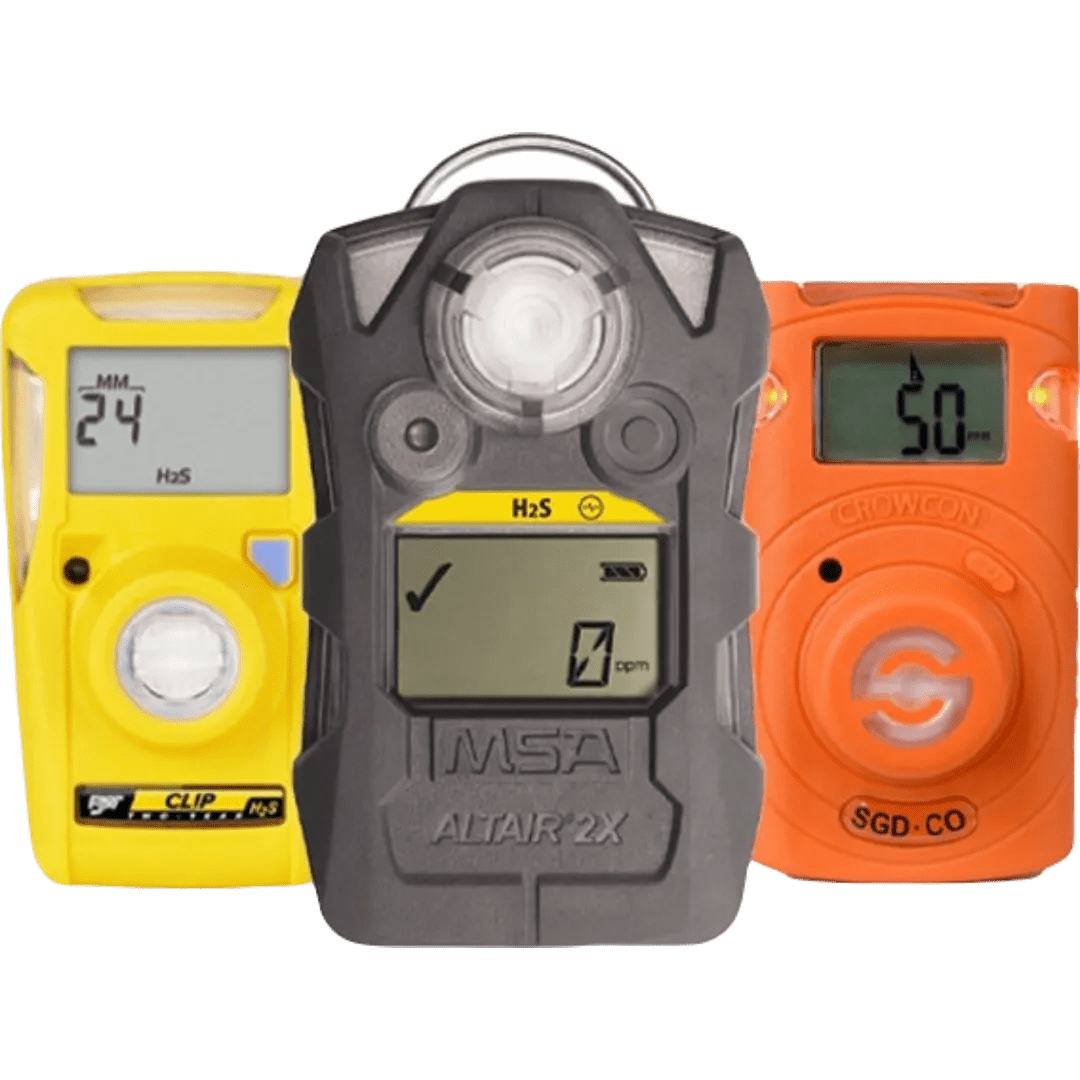Hydrogen sulfide (H2S) gas detectors are crucial for monitoring and detecting hazardous levels of H2S in the air, which is vital in industries such as oil and gas, mining, and waste treatment. These detectors help protect workers from exposure to dangerous gas concentrations, which can cause serious health risks, including respiratory failure. H2S gas detectors typically use electrochemical sensors that provide accurate real-time readings and alarms when gas levels exceed safe thresholds. Compliant with safety standards like IECEx and SASO 2746, these devices are essential for worker safety in confined or hazardous spaces.
Key Features:
- Real-Time Monitoring: Continuously measures H2S gas levels to detect dangerous concentrations.
- Audible and Visual Alarms: Alerts the user immediately when H2S levels exceed safety thresholds.
- Compact and Portable: Small, lightweight design makes the detector easy to carry and use in a variety of environments.
- Long Battery Life: Extended battery life ensures reliability over long work shifts.
Types and Standards:
- Single-Gas Detectors: Designed specifically for H2S gas detection.
- Multi-Gas Detectors: Can detect multiple gases, including H2S, carbon monoxide (CO), oxygen (O2), and more.
- IECEx, SASO 2746: Standards for gas detectors to ensure safety and reliability in hazardous environments.
Brands Available:
Honeywell, MSA, RKI Instruments, GFG, and Dräger offer top-quality H2S gas detectors that are trusted by safety professionals in various industries.
General Maintenance:
Regularly calibrate the detector according to manufacturer guidelines to ensure accuracy. Check the battery life, and replace sensors and batteries as needed. Clean the detector after each use to prevent buildup of dirt or debris that could affect sensor performance. Store the device in a protective case when not in use.





